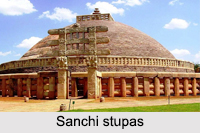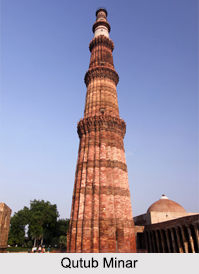 History of Indian architecture can be categorised into earliest, medieval and modern. It begins with a past which dates back to 2500 B.C. and it was the period of the Indus valley civilisation. A number of foreign invasions and indigenous factors have contributed to the modification of the architecture of India. The ancient period dates till the Gupta dynasty. The medieval era deals with the advent of the Muslim architecture till the colonization. The colonial architecture falls under modern architecture of India.
History of Indian architecture can be categorised into earliest, medieval and modern. It begins with a past which dates back to 2500 B.C. and it was the period of the Indus valley civilisation. A number of foreign invasions and indigenous factors have contributed to the modification of the architecture of India. The ancient period dates till the Gupta dynasty. The medieval era deals with the advent of the Muslim architecture till the colonization. The colonial architecture falls under modern architecture of India.
Ancient Indian Architecture
Among India`s ancient architectural stays, the most features are the temples, Chaityas, Viharas, Stupas and other spiritual structures. The first buildings from India are from Mehrgahr which are from about 7000 BC but the primary real stone architecture dates to about 2500 BC, in the Harappan period. Around 200 BC, architects began to carve Buddhist temples into the sides of cliffs. About 500 AD, Indian architects began to apply mortar to hold the stones together. Temples got columns around them and towers over them. About 1000 AD, Indian architects began to swap wood beams with iron beams. The invasion of Alexander the great marked the foundation of the Maurya Empire. The major architecture of this period is based on Buddhist thought for example the Stupas at Sanchi and pillars of Bodh Gaya.
With the incursion of the Aryans, the Dravidians were pushed down in the south. So the majority of the architecture of the Dravidians is found in the south Indian states of Tamil Nadu, Kerala, Andhra Pradesh and Karnataka. The epics of Ramayana and the Mahabharata were written in this period.
The Sunga dynasty emerged after the Mauryas and the architecture of this period has large part of decoration of the stone railings and gateways which are now surrounding the Buddhist Stupa or relic mound. Examples of these monuments are Sanchi stupas in Bhopal, Bharhut in Nagod State and Amaravati on the Krishna River. The Andhra period is also marked with Buddhist architecture. 
Architecture under the Kushanas is characterised with the use of ivory and imported glass. The architectural monuments like the Stupas and monasteries of this era is adorned with relief friezes carved in dark schist, portraying figures in classical poses with flowing Hellenistic draperies. The most famous Stupa in Gandhara, a veritable Buddhist wonder of the world, was the great tower raised by King Kanishka in Peshawar.
The rulers of the Chola dynasty were mainly devotees of Lord Shiva and the architectural monuments of this period are mainly temples dedicated to Lord Shiva. The architecture at Vijayanagar consisted of groups of small structures rather than single large temples. The final chapter of Dravidian architecture is the building activity of the Nayaka Dynasty of kings who were established with their capital at Madurai in the 17th century. The temples of this last Dravidian dynasty, exemplified by the shrine at Tiruvannamalai and the Great Temple at Madurai are distinguished first of all by a great expansion of the temple precinct. The architecture under the Chalukya dynasty in south India comprises temples of Pattadakal, Aihole and Badami. Religions like Hinduism, Jainism and Buddhism influenced the architectural patterns of these temples.
The cave temples of Badami has plain exterior but extremely beautifully carved interior. The reign of Western Chalukyas was an important period in the development of Deccan architecture. Their architecture served as an abstract connection between the Badami Chalukya architecture of the 8th century and the architecture of the Hoysalas popularised in the 13th century. The towers over the temple attract attention for its elaborate carvings and ornamentation. Among the architecture of the Hoysalas, the most notable are the Chennakasava temple at Belur, the temples at Arasikere and Belavadi and the Hoysaleswara temple at Halebidu.
Medieval Indian Architecture
The history of the medieval Indian architecture commences with the invasion of the Delhi sultanates. The Qutub Minar, Siri fort and the Alai Darwaza are among the exquisite architectural evidence of this period. There were two different styles of temple-building in India, a north Indian style and a south Indian style. North Indian temples also had a high balcony, like earlier Etruscan and Roman temples. They had flat stone roofs. The period of Tughluq dynasty in history has been marked as the time of ecstasy and rediscovery for Islamic architectures. Firoz Shah Tughlaq who ruled Delhi from 1351 to 1388 was a great patron of Islamic architecture and built the 5th city of Delhi, named as Ferozshah Kotla.
Mughal architecture reached its peak in the sovereignty of Emperor Akbar. The individual features of the Islamic architecture are seen in the regulated architecture of the mosque and the mausoleum. The magnificent city of Fatehpur Sikri is a remarkable example of the architecture of the Mughals. The most impressive building of Fatehpur Sikri is the Jami masjid. The southern entrance of this mosque is the Buland Darwaza. The Hindu architecture during Akbar is manifested in the palaces of Jodha Bai and in the resident of Birbal. Shah Jahan`s reign was noted for the elegance and refinement in architecture. Built in white marble the Taj Mahal is the most exquisite creation of Shah Jahan. The Agra fort constructed by Shah Jahan continues to evoke a sense of ecstasy and wonder.
Modern Indian Architecture
History of architecture in modern India began with the advent of the colonizers. Colonization of India had a massive impact in the architectural style. The buildings and monuments that were constructed during that age were influenced by the Dutch, Portuguese, French and English architecture.




